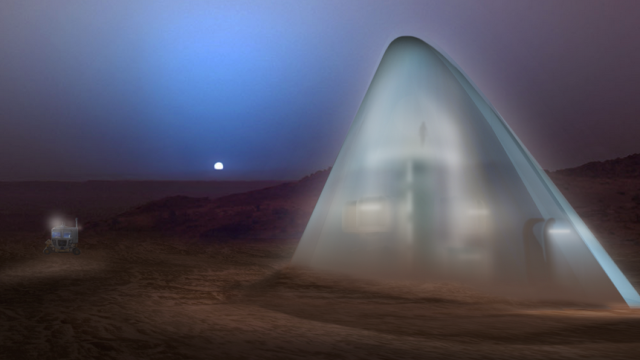The discovery of liquid water on Mars is great news for would-be settlers, but we’ll need more than H2O if we actually want to live there. The only cost-effective way for humans to colonize the Red Planet is for us to start building infrastructure out of local materials. I’m talking rovers made of Martian metals and greenhouses built on Martian cement. A series of fascinating new designs are helping NASA imagine what that locally-sourced space colony could look like.
Earlier this year, NASA and America Makes challenged Mars enthusiasts to design 3D printed habitats for future astronauts. After a four-month submission period, 30 design competition finalists were selected and displayed at the New York Maker Faire this past weekend. There, teams were judged based on their architectural concept and design approach, in addition to the habitability, functionality and constructibility of the concept using 3D printing. The top two design teams took home a $US25,000 and $US15,000 prize, respectively.
Let’s have a look at some of the wonderfully weird habitats creative, space-addled minds have dreamt up.
The Space Igloo of Your Dreams
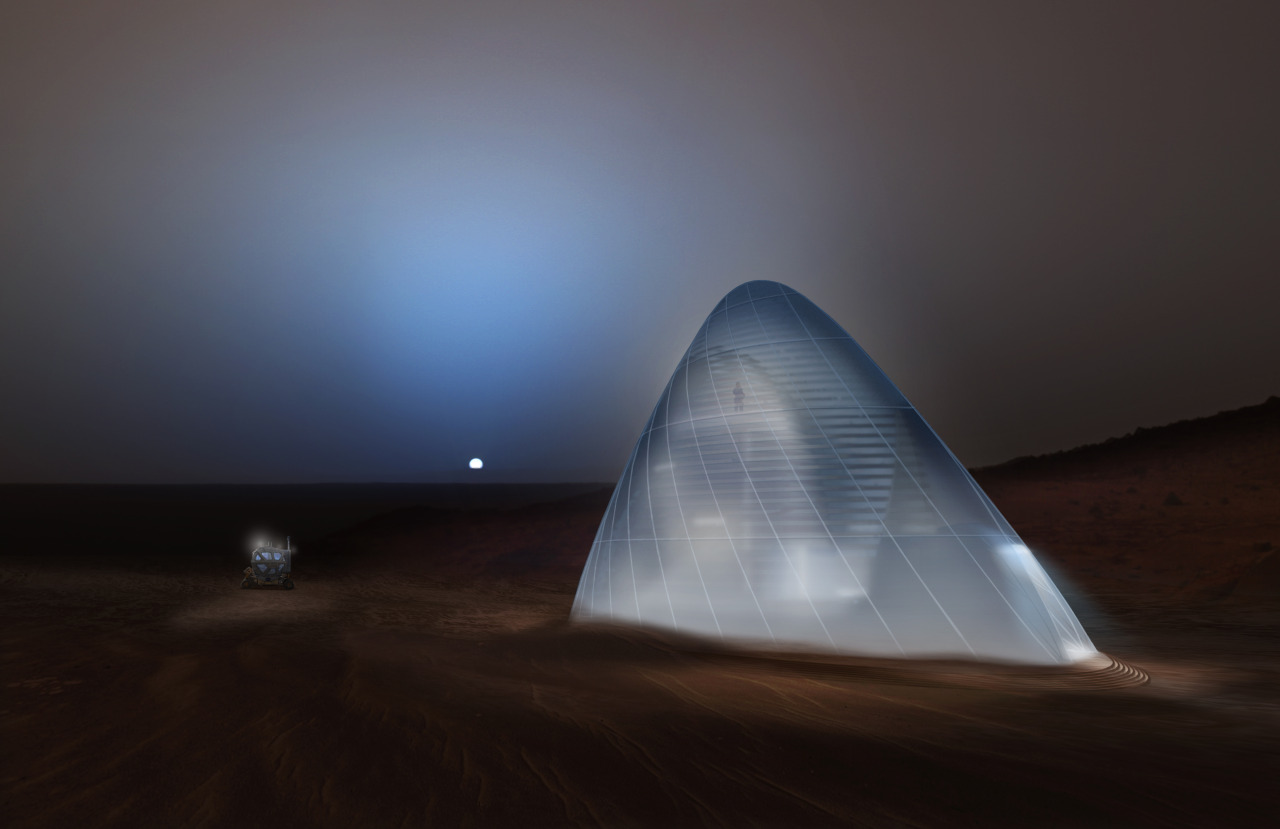
If you can’t beat the cold — and trust me, on Mars you really can’t — you might as well embrace it. The first place prize went to Team Space Exploration Architecture and Clouds Architecture Office for “Ice House,” a space igloo that takes the edge off the bitter Martian winters with gently sloping glacial facades. The team envisions human colonists extracting ice from the regolith near Mars’ north pole to construct a “pressurised radiation shell” that encloses a habitat and gardens.
Not totally clear on how you go outside, but hey, Martian north pole? You probably won’t want to.
Go Modular or Go Home
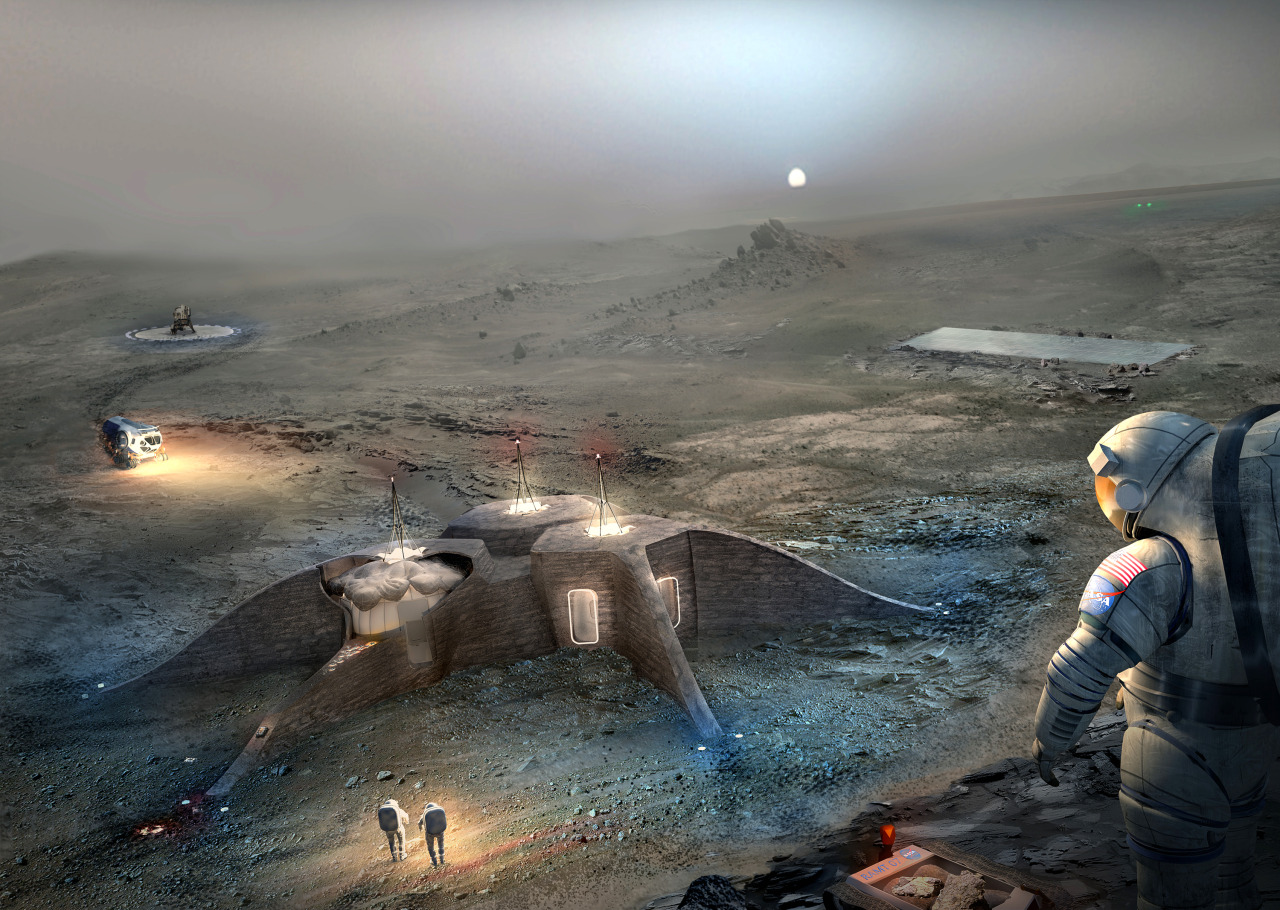
Space habs are vulnerable in a big way. If a single piece of shrapnel pierced the hull of the ISS, the atmosphere would quickly fizzle off into space. If we’re going to put humans on Mars, we want to make sure there’s enough redundancy built into their infrastructure that one leaky roof doesn’t bring on the apocalypse.
That’s the philosophy behind “Gamma,” the second place design built by acclaimed architectural firm Foster + Partners. As Gizmodo’s Jamie Condliffe describes in detail, this scheme involves deploying a set of modular, inflatable habs to the Martian surface to scout a suitable location before humans arrive. Once the habs are in place, a “multi-robot regolith additive manufacturing” system will begin construction of an outer hab shield made of Martian regolith — a sort of high-tech termite mound.
As Mark Watney’s fictional survival saga reminds us, there are going to be lots of unforeseen difficulties on Mars. A design that acknowledges this reality gives us a better chance of beating the odds.
Waste Not, Want Not
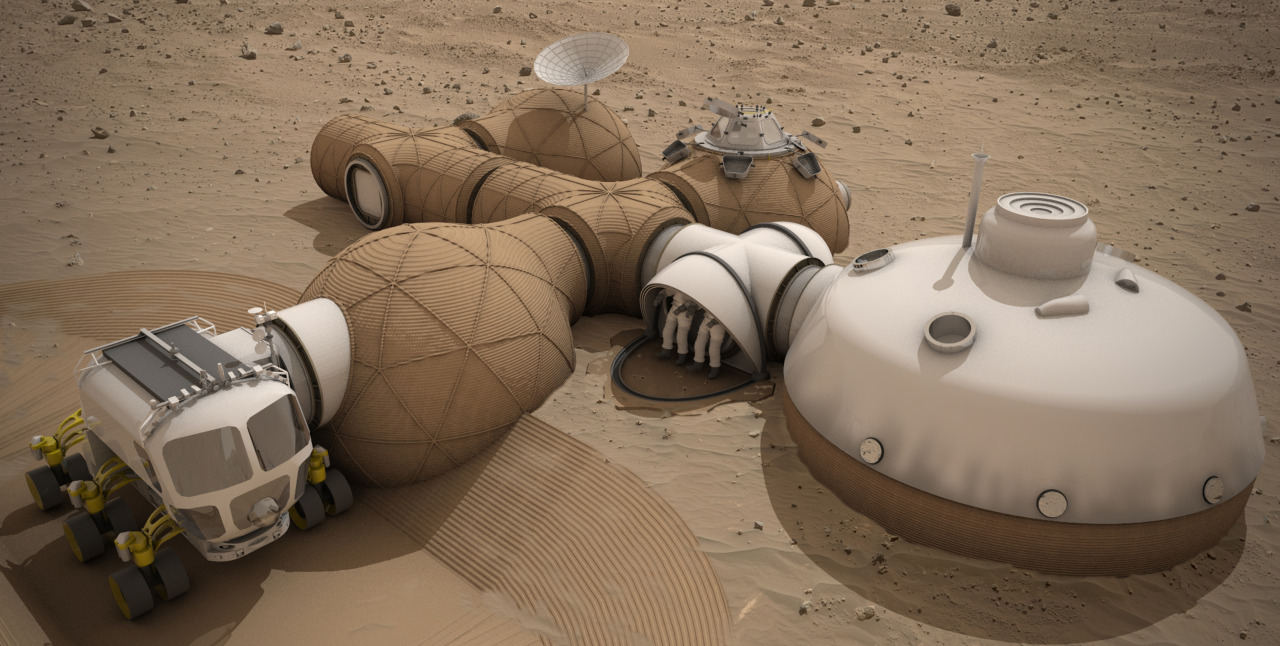
“Recycle everything” will surely become one of the Ten Martian Commandments. But team LavaHive, the third place runner-up in the design competition, takes the environmentalist mantra to a new level by cleverly incorporating spacecraft components into its design. (Not like you’ll need those spaceships for running back to Earth or anything, hah!)
Once an Entry, Descent and Landing system deploys construction rovers to the surface, its back shell pops off and becomes the roof for an inflatable habitat. Next, the team proposes using a novel “lava casting” method — melting basaltic rocks into hot lava and moulding them into walls and floors and such — to build connecting corridors between the main habitat and various subsections. With greater structural strength and density than traditional sintered materials, basaltic lava could offer better radiation shielding, atmospheric containment, and protection from those deadly Martian dust storms. It’s also the ultimate reusable material.
Let the Robots Build It
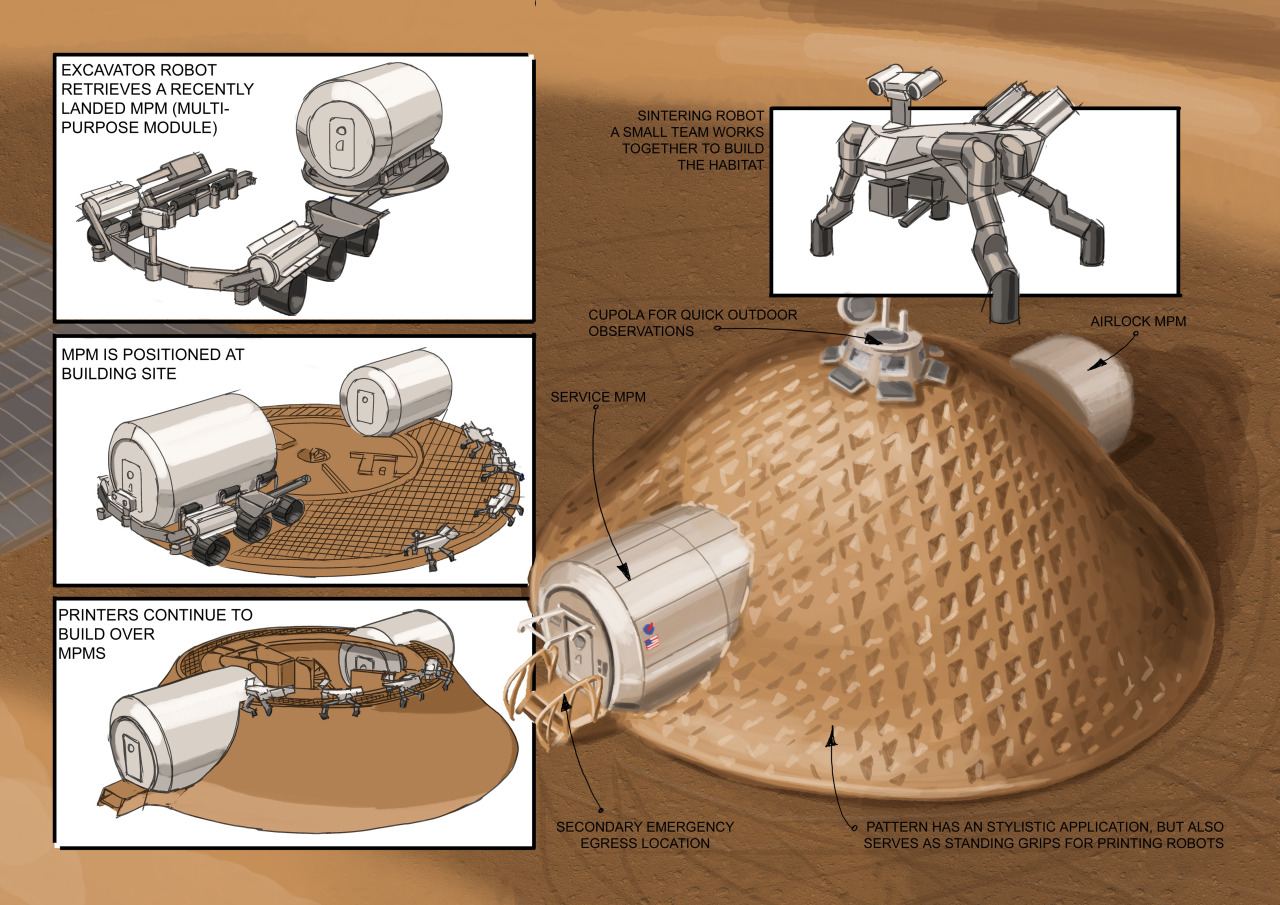
Machines are a wonderful perk of living in a technological society. But in space, they’re literally going to be our lifeline. Embracing the fact that we’ll need robots to do just about everything, team MASS puts them to work. Large, earth-moving robots to excavate the Martian regolith. Swarms of smaller, legged robots to laser sinter rocks into structural components, explore the surrounding region, and build the hab from the ground up. Robots, robots, everywhere — let’s just hope they don’t turn against us.
The anthill-like dome depicted above is only the tip of this Martian habitat: To avoid exposure to surface radiation, colonists will sleep and spend their downtime in a cavernous below ground structure, nesting away the cold Martian winters like the happy space hobbits they are.
Bio-Inspired
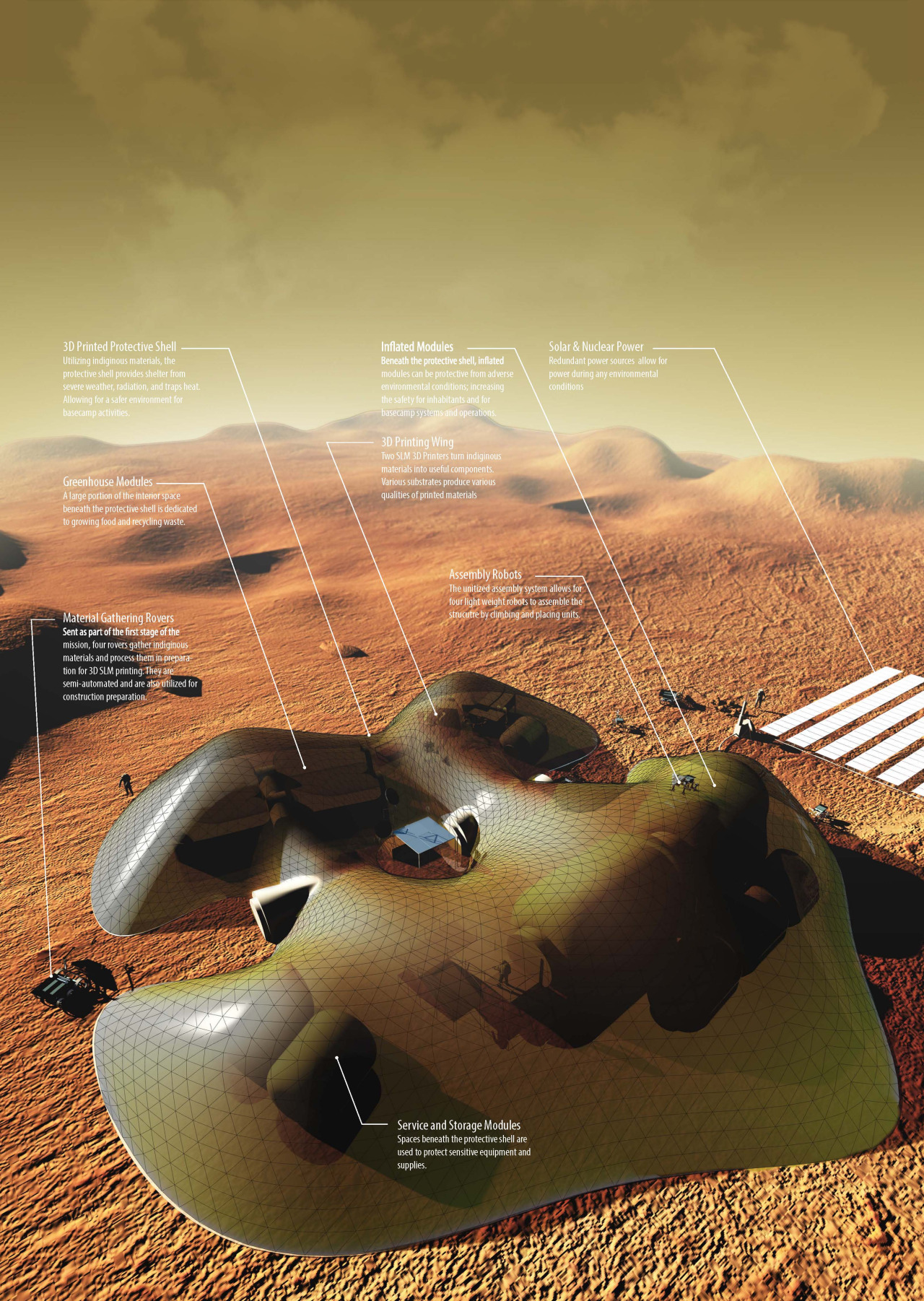
A little biomimicry could go a long way toward making Mars feel Earth-like. “Mollusca L5,” designed by LeeLabs, draws inspiration from shell-building creatures on Earth, which, like Martian settlers, are just trying to keep their soft squishy parts safe. In this concept, inflatable habitats for living and growing crops are protected by a vaulted, shell-like structure composed of high strength glass panels refined from Martian minerals.
It isn’t clear whether the entire enclosure, or just its sub-components, would contain an atmosphere. But one way or another, the “shell” creates a sense of protected open space outside the hab — a sort of Martian backyard, if you will. If you squint, you can even see room for a jogging track around the outer perimeter.
Despite its recent case of Mars-mania, NASA recognises that a human colony on the Red Planet is a distant dream — and as such, all outlandish ideas are still on the table. But the philosophy that unites these concepts — of using and reusing the resources at hand — is one that we’re going to have to embrace if our crazy life-in-space dream is ever to be realised.
[NASA]
